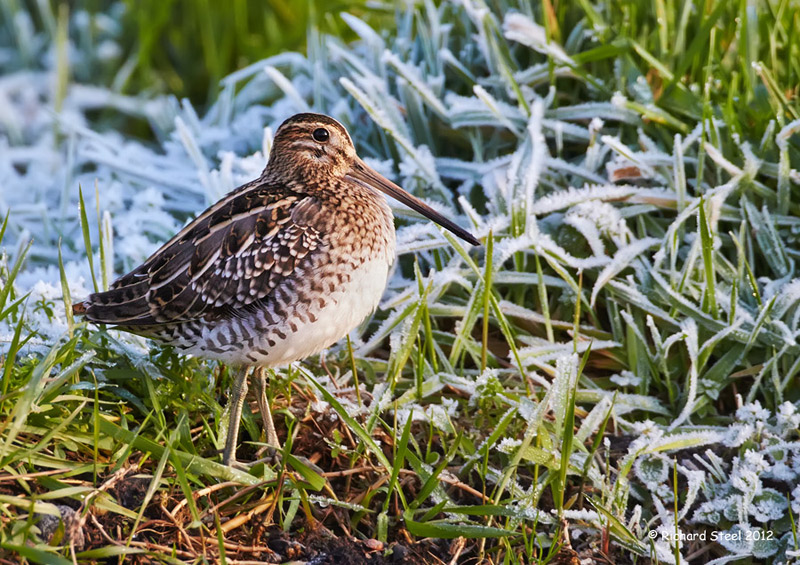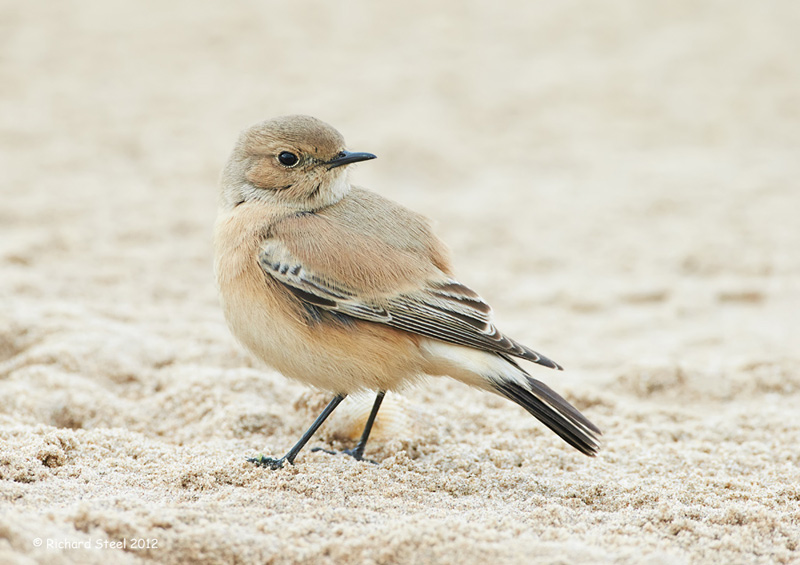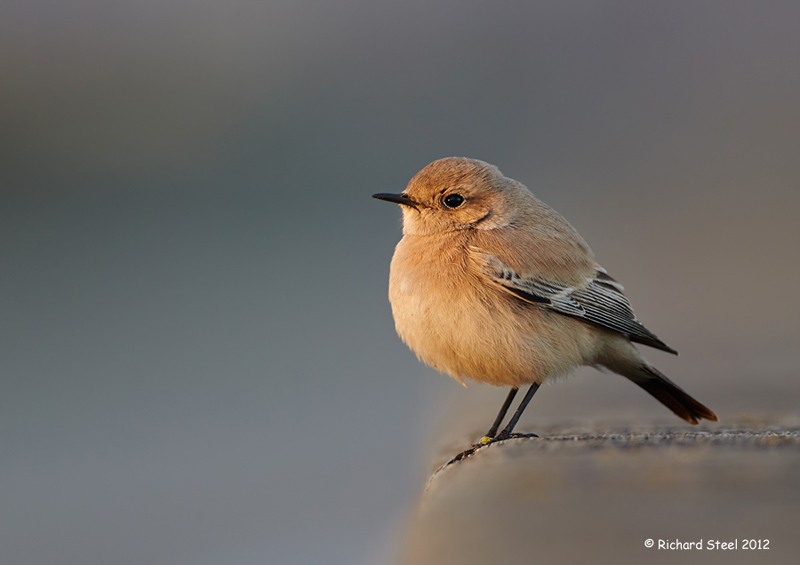Seasons Greetings
This will be a fairly short blog post as I still have an ever increasing list of things to get done before Christmas day tomorrow. The main reason of this post is to wish you all a very Merry Christmas and New Year filled with memorable wildlife encounters. I would also like to send you all a big thank you for taking the time to view the blog, for your comments which are always appreciated and for your support.
I was trying to think of what to produce for my e-card this year and really a Christmas card would not be right without some. Looking through my library I have relatively few photos of birds on snow so the choice was a bit limited. So I selected a Fieldfare one of the UK winter migrant thrushes. These birds love to eat berries so I thought the inclusion of the king of berries, a chilled strawberry, would make an appropriate present for the bird. Obviously I would like to point out, but I suspect you will have already guessed :), that the card below is a Photoshop creation. You don't tend to find too many Fieldfare wearing Santa hats.
I thought I would also take this moment just to add a couple of images from recent brief encounters. We had a recent cold snap and often such weather tends to displace birds from their normal locations. This is a Snipe that I found on a frosty road side verge taking in some weak winter sun.
A Barn Owl hunting over some farmland in some rare late afternoon winter sun. I hope to photograph more of these enigmatic birds at the start of New Year if the weather is kind.
To finish this post, one of several Short-eared Owls that have taken up winter residence on the local salt marsh.
Have a great day tomorrow and wish you all have a relaxing and happy holiday.
Monday, December 24, 2012
Tuesday, December 18, 2012
The Invasion
Apologies for the slight lack of blog updates but it has been a busy time as Christmas descends upon us once more.
This winter has seen a huge invasion of Waxwings into the UK due to failure of the berry crop in more northerly latitudes. Literally thousands of birds have descended into the country and currently eating their way southward. I have quite a few waxwing photographs in my library already but they are such photogenic birds they are difficult to resist. The couple of sessions I have had with the birds to date have been brief and local.
Generally the are relatively easy birds to photograph as they are unwary and once they have targeted a particular berry tree will keep returning until every last berry has been consumed. I cannot imagine how many waxwings photographs have found their way on to photographers' memory cards in the UK over the last couple of months but it must run into literally hundreds of thousands. So here is my small contribution.
Typically a flock of Waxwings will find a tall tree to perch in, where they sit filling the air with their wonderful trilling calls, before descending as a group to their target berry tree. They will frenetically feed for a couple of minutes before flying back to the perching tree. The photography sessions therefore tend to have prolonged periods of quiet followed by intense bursts of activity as the birds descend to feed.
One small flock I found were feeding on to some very low Cotonester bushes, having stripped all the nearby rowan trees. It made a nice change to capture the birds with some nicely coloured backgrounds from the foliage behind, rather than against the sky.
As Waxwings really love eating Rowan berries they can often be found in urban areas and retail parks. Urban landscape architects seem to frequently include these trees in the designs to the benefit of both the birds and photographers. A group of photographers surrounding a tree in these areas always draws in the curiosity of the general public. These urban areas can also produce some interesting and rather strange coloured backgrounds to some of the photographs due to buildings in the background.
The purple of a Premier Inn sign.
or the red from a drive through KFC.
One of my friends has some interesting photographs of the birds against the orange background of the signs a B&Q DIY store.
The birds should stay around until the spring before they make their way back northwards. So if you are out shopping over the Christmas break or visiting a retail park it is worth looking in the trees for these winter invaders. To me time spent with these birds in a car park is certainly much more interesting and rewarding than trying to grab a bargain in the post-Christmas sales.
Apologies for the slight lack of blog updates but it has been a busy time as Christmas descends upon us once more.
This winter has seen a huge invasion of Waxwings into the UK due to failure of the berry crop in more northerly latitudes. Literally thousands of birds have descended into the country and currently eating their way southward. I have quite a few waxwing photographs in my library already but they are such photogenic birds they are difficult to resist. The couple of sessions I have had with the birds to date have been brief and local.
Generally the are relatively easy birds to photograph as they are unwary and once they have targeted a particular berry tree will keep returning until every last berry has been consumed. I cannot imagine how many waxwings photographs have found their way on to photographers' memory cards in the UK over the last couple of months but it must run into literally hundreds of thousands. So here is my small contribution.
Typically a flock of Waxwings will find a tall tree to perch in, where they sit filling the air with their wonderful trilling calls, before descending as a group to their target berry tree. They will frenetically feed for a couple of minutes before flying back to the perching tree. The photography sessions therefore tend to have prolonged periods of quiet followed by intense bursts of activity as the birds descend to feed.
One small flock I found were feeding on to some very low Cotonester bushes, having stripped all the nearby rowan trees. It made a nice change to capture the birds with some nicely coloured backgrounds from the foliage behind, rather than against the sky.
As Waxwings really love eating Rowan berries they can often be found in urban areas and retail parks. Urban landscape architects seem to frequently include these trees in the designs to the benefit of both the birds and photographers. A group of photographers surrounding a tree in these areas always draws in the curiosity of the general public. These urban areas can also produce some interesting and rather strange coloured backgrounds to some of the photographs due to buildings in the background.
The purple of a Premier Inn sign.
or the red from a drive through KFC.
One of my friends has some interesting photographs of the birds against the orange background of the signs a B&Q DIY store.
The birds should stay around until the spring before they make their way back northwards. So if you are out shopping over the Christmas break or visiting a retail park it is worth looking in the trees for these winter invaders. To me time spent with these birds in a car park is certainly much more interesting and rewarding than trying to grab a bargain in the post-Christmas sales.
Labels:
Waxwing
Tuesday, December 04, 2012
Lost in Rhyl
Reports recently appeared on the Internet of a very late Wheatear on a beach at Rhyl in North Wales. Further investigation by birdwatcher revealed this to be a female Desert Wheatear which was at least a couple of thousand miles away from where it should have been in North Africa. I was in two minds whether to visit the bird for a couple of reasons. Firstly I tend to avoid rare birds as I don't like all the commotion from the masses descending upon them. Secondly this was a female bird which from the initial photographs being posted on the Internet did not appear to be very much different in appearance from a female Northern Wheatear. It was easy to see how the person who first found it was confused by its identity.
In the end I decided I would pay it a visit but would time my arrival for first light in an attempt to avoid the crowds that would no doubt arrive later in the day to glimpse this small vagrant bird. Information was very good as to its location and I knew I was in the right place by seeing two people with tripods already present when I arrived and where I expected the bird to be. Finding rare birds is generally quite easy as you just look for the crowds or gathering of tripods.
The bird was perched on the edge of the sea defences wall when I arrived being beautifully lit by the golden glow of the early morning winter sun. These first few images turned out to be my favourites from my short session and to keep you in suspense :) I will show these at the end of this post. My first impressions of the bird were that it appeared slightly smaller and more 'dumpy' than a Northern Wheatear. However, it its rotund appearance may have due to it being fluffed up and not surprisingly given the stiff icy northerly wind blowing in off the sea. It must have felt a long way from its home in the warm sunny climate of North Africa.
A cyclist came through and the bird flew over the wall and landed on the beach below where it stayed for the rest of my visit. Unfortunately due to the height of the wall and low angle of the sun there was no chance of getting any further sunlight on the bird to illuminates its pale sandy orange hues.
I brought a small box of mealworms with me, figuring the bird would probably welcome a free hand out which would hopefully also help build up its energy reserves that would be needed for it to return to where it should be. They appeared to be gratefully received as the bird almost instantly started feeding on them. However, I expect many of these lost birds sadly perish and never make their way back to where they should be. The cold north Wales beach certainly struck me as a relatively inhospitable place for the bird which spent part of the time using a large boulder as a wind break.
The crowds began to appear and I decided I had enough photographs of the bird and it was time to depart. A scattered some more mealworms before I left. A couple of days later the bird also disappeared and I would like to optimistically think was making its way southward after its brief stopover and being lost in Rhyl.
As promised my favourite photograph from the session was the bird glowing on top of the sea wall when I first arrived.
Reports recently appeared on the Internet of a very late Wheatear on a beach at Rhyl in North Wales. Further investigation by birdwatcher revealed this to be a female Desert Wheatear which was at least a couple of thousand miles away from where it should have been in North Africa. I was in two minds whether to visit the bird for a couple of reasons. Firstly I tend to avoid rare birds as I don't like all the commotion from the masses descending upon them. Secondly this was a female bird which from the initial photographs being posted on the Internet did not appear to be very much different in appearance from a female Northern Wheatear. It was easy to see how the person who first found it was confused by its identity.
In the end I decided I would pay it a visit but would time my arrival for first light in an attempt to avoid the crowds that would no doubt arrive later in the day to glimpse this small vagrant bird. Information was very good as to its location and I knew I was in the right place by seeing two people with tripods already present when I arrived and where I expected the bird to be. Finding rare birds is generally quite easy as you just look for the crowds or gathering of tripods.
The bird was perched on the edge of the sea defences wall when I arrived being beautifully lit by the golden glow of the early morning winter sun. These first few images turned out to be my favourites from my short session and to keep you in suspense :) I will show these at the end of this post. My first impressions of the bird were that it appeared slightly smaller and more 'dumpy' than a Northern Wheatear. However, it its rotund appearance may have due to it being fluffed up and not surprisingly given the stiff icy northerly wind blowing in off the sea. It must have felt a long way from its home in the warm sunny climate of North Africa.
A cyclist came through and the bird flew over the wall and landed on the beach below where it stayed for the rest of my visit. Unfortunately due to the height of the wall and low angle of the sun there was no chance of getting any further sunlight on the bird to illuminates its pale sandy orange hues.
I brought a small box of mealworms with me, figuring the bird would probably welcome a free hand out which would hopefully also help build up its energy reserves that would be needed for it to return to where it should be. They appeared to be gratefully received as the bird almost instantly started feeding on them. However, I expect many of these lost birds sadly perish and never make their way back to where they should be. The cold north Wales beach certainly struck me as a relatively inhospitable place for the bird which spent part of the time using a large boulder as a wind break.
The crowds began to appear and I decided I had enough photographs of the bird and it was time to depart. A scattered some more mealworms before I left. A couple of days later the bird also disappeared and I would like to optimistically think was making its way southward after its brief stopover and being lost in Rhyl.
As promised my favourite photograph from the session was the bird glowing on top of the sea wall when I first arrived.
Subscribe to:
Comments (Atom)






























